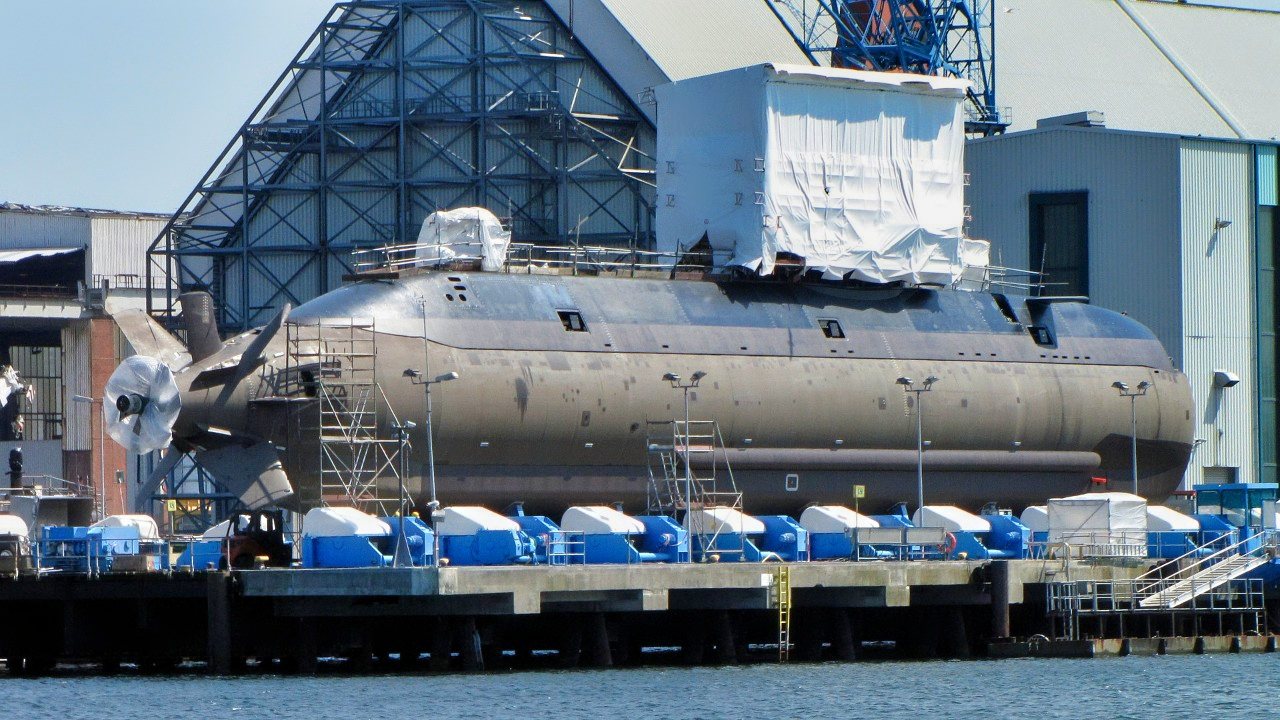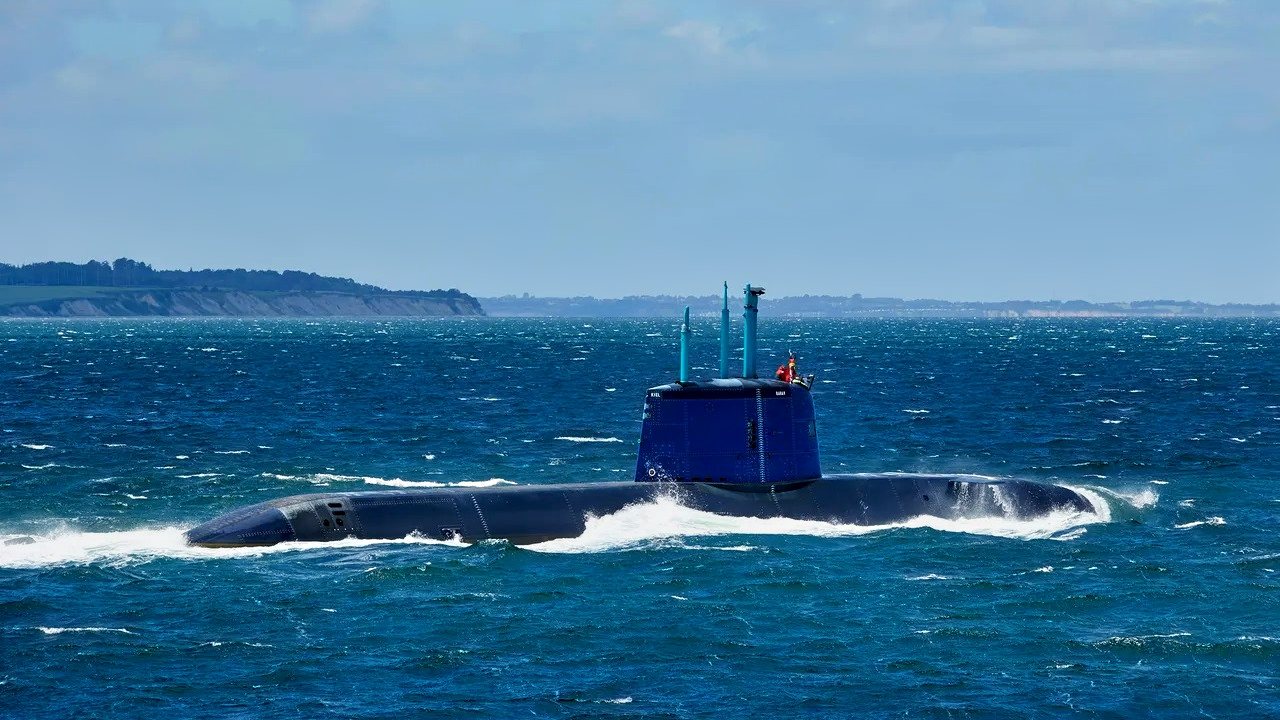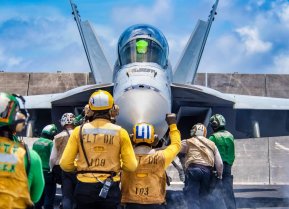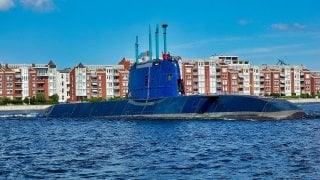Dolphin-Class: Israel's Submarines Might Have a Big Nuclear Secret
Israel's Dolphin-class submarines are a vital part of its nuclear deterrence strategy. Originally developed with German assistance after the Gulf War, the submarines are believed to be nuclear-armed, giving Israel a second-strike capability.
Summary: Israel's Dolphin-class submarines are a vital part of its nuclear deterrence strategy. Originally developed with German assistance after the Gulf War, the submarines are believed to be nuclear-armed, giving Israel a second-strike capability. The latest Dolphin II-class is larger, with advanced features like a potential vertical launch system. While their diesel-electric engines limit range, they excel in regional patrols and stealth due to air-independent propulsion. Though costly, Dolphins provide crucial defense amidst Middle Eastern tensions.
Here Comes the Dolphin-Class Submarine
When INS Drakon enters service in the Israeli Navy, it will represent the sixth submarine and the third new-generation Dolphin 2-class ship in the fleet.
For more than twenty-five years, the diesel-electric submarine class has remained an integral part of Israel’s deterrence strategy.
While the Jewish state maintains a nuclear policy of “ambiguity,” experts largely concur that the Dolphin submarines are nuclear-armed, providing Israel with a sea-based, second-strike capability.
As the Israel-Hamas war rages on and Iran’s proxy groups continue to stir up trouble in the Red Sea and Persian Gulf, Israel’s sophisticated weapon systems like the Dolphin-Class may play a larger role.
The History of the Dolphin-Class:
Following the lessons learned from the Yom Kippur War and Persian Gulf War, Israeli officials recognized the necessity of building a robust nuclear triad of air, sea and land-based nuclear weapons.
The concept of the Dolphin-Class derived from this objective. During the 1991 Gulf War, German firms assisted Iraq’s ballistic missile development, providing the country with the range of capabilities needed to reach Israeli cities. To compensate Israel for its losses during the war caused by these longer-range missiles, Germany approved an assistance package for the Jewish state, which included the construction of two Dolphin-class submarines.
Israel’s first Dolphin-class ships, Dolphin, Tekuma and Leviathan, entered service in 1999 and 2000. Constructed by Howaldtswerke-Deutsche Werft in Kiel, Germany, the Dolphin-1 submarines measured roughly 187 feet long and armed to the teeth. Each vessel in this class features six standard 533-mm torpedo tubes and four 650mm torpedo tubes. Although the exact specs of the tubes’ makeup remains classified, experts believed that their Triton fiber-optic guided-weapon system may enable the platforms to reach targets in ranges greater than nine miles.
When the Dolphin II-class submarines first entered service in 2014, they were refitted to sport an increased payload. Analysts believe that these submarines possess the ability to carry nuclear weapons. However, Berlin has refused to respond to this speculation and confirm whether or not it had modified the Dolphin II ships to be equipped with cruise missiles armed with nuclear warheads.

Last year, rumors circulated surrounding the latest Dolphin II-submarine INS Drakon. Bigger than its sister-ships, the submarine also sports a strikingly large sail. Experts believe that this increased size provides room for advanced new missiles. Many analysts predict that the newly purchased submarine also features a vertical launch system (VLS), which allows for a greater variation of weapons to be deployed. While a sophisticated VLS and the potential to launch nuclear weapons are significant, the Dolphin ships have been constructed to serve in more localized patrols, unlike other nuclear-powered vessels. The class’ diesel-electric power source limits how long these submarines can remain submerged.
Additionally, the air-independent propulsion system (AIP) incorporated on the newer Dolphin vessels minimizes their acoustic signature, making them more challenging for enemy warships to detect. The Dolphin II submarines also allegedly feature advanced sonar designed by Rafael Advanced Defense Systems.

Cost-wise, the Dolphin ships are among the pricier pieces of machinery that the IDF possesses. However, considering the geopolitical turmoil threatening the Middle East, the necessity of the Jewish state’s sea-based deterrence is paramount, rendering these submarines cost-effective.
About the Author: Maya Carlin
Maya Carlin, National Security Writer with The National Interest, is an analyst with the Center for Security Policy and a former Anna Sobol Levy Fellow at IDC Herzliya in Israel. She has by-lines in many publications, including The National Interest, Jerusalem Post, and Times of Israel. You can follow her on Twitter: @MayaCarlin. Contact the Editors of the National Interest with any questions: [email protected].
Image Credit: Creative Commons.


